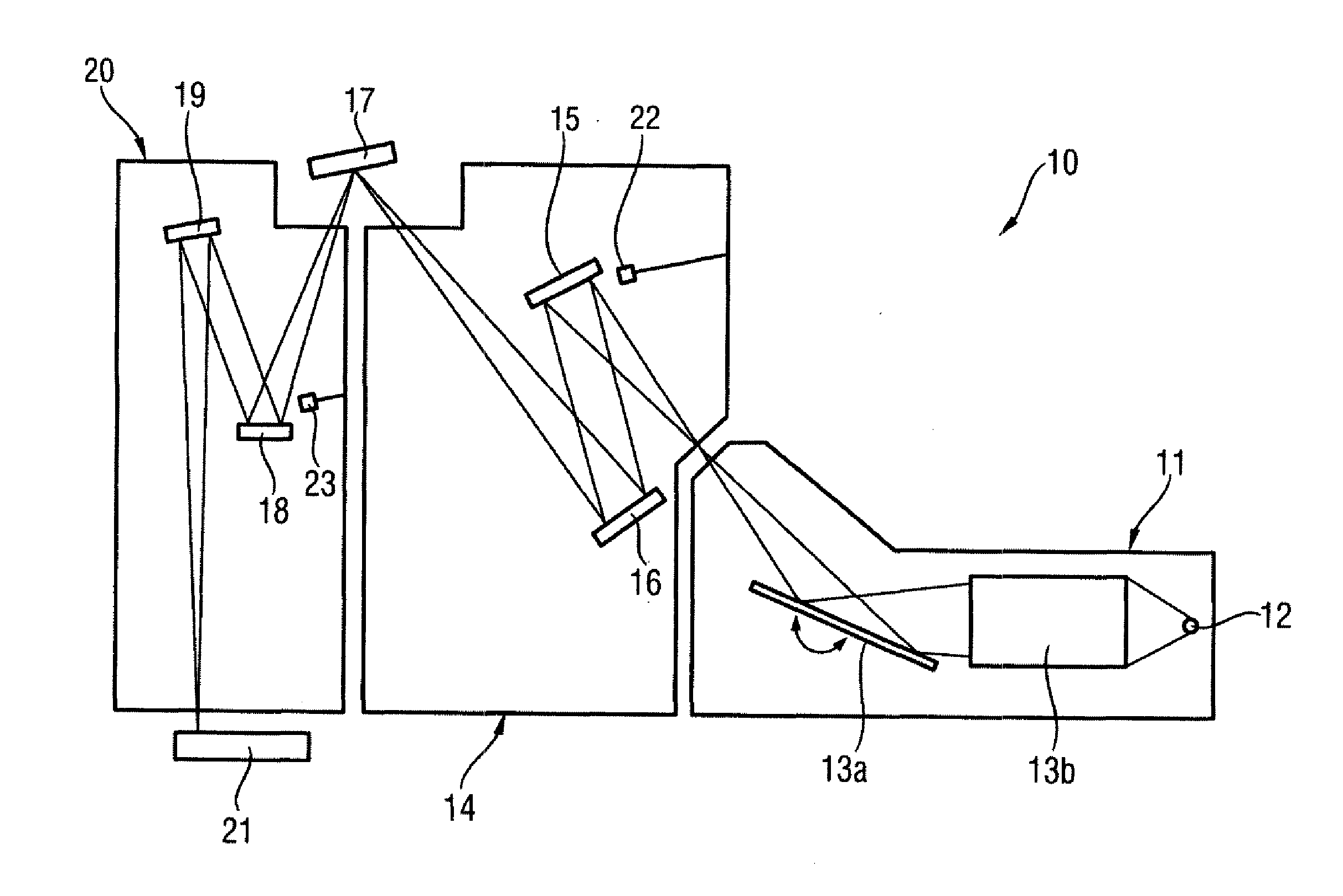Reflective optical element and method for operating an EUV lithography apparatus
a technology of reflective optical elements and lithography equipment, which is applied in the direction of photomechanical equipment, lighting and heating equipment, instruments, etc., can solve the problems of reducing the reflectivity of the optically active surface, affecting the performance of the lithography equipment, and affecting the lithography performance of the euv lithography equipment, etc., to achieve the effect of high reflectivity values, sufficient long-term stability, and sufficient protection of the reflective optical elemen
- Summary
- Abstract
- Description
- Claims
- Application Information
AI Technical Summary
Benefits of technology
Problems solved by technology
Method used
Image
Examples
Embodiment Construction
[0034]FIG. 1 schematically illustrates an EUV lithography apparatus 10. Essential components are the beam shaping system 11, the illumination system 14, the photomask 17 and the projection system 20. The EUV lithography apparatus 10 is operated under vacuum conditions in order that the EUV radiation is absorbed as little as possible in its interior.
[0035]The beam shaping system 11 comprises a radiation source 12, a collimator 13b and a monochromator 13a. By way of example, a plasma source or else a synchrotron can serve as radiation source 12. The emerging radiation in the wavelength range of approximately 5 nm to 20 nm is firstly concentrated in the collimator 13b. In addition, the desired operating wavelength is filtered out with the aid of a monochromator 13a. In the wavelength range mentioned, the collimator 13b and the monochromator 13a are usually embodied as reflective optical elements. In the case of the collimators, a distinction is made between so-called normal-incidence a...
PUM
 Login to View More
Login to View More Abstract
Description
Claims
Application Information
 Login to View More
Login to View More - R&D
- Intellectual Property
- Life Sciences
- Materials
- Tech Scout
- Unparalleled Data Quality
- Higher Quality Content
- 60% Fewer Hallucinations
Browse by: Latest US Patents, China's latest patents, Technical Efficacy Thesaurus, Application Domain, Technology Topic, Popular Technical Reports.
© 2025 PatSnap. All rights reserved.Legal|Privacy policy|Modern Slavery Act Transparency Statement|Sitemap|About US| Contact US: help@patsnap.com



